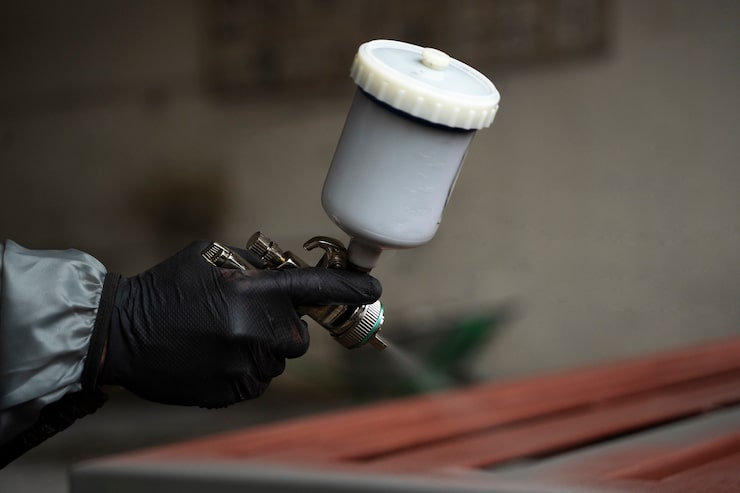Understanding what is the electrostatic phenomenon in powder coating is fundamental to grasping how powder coating technology works and why it has become a preferred method for finishing surfaces in various industries. The electrostatic phenomenon is the core physical principle behind powder coating, enabling the dry powder particles to adhere uniformly and efficiently to the target surface before curing into a durable, protective layer.
At its essence, the electrostatic phenomenon in powder coating refers to the use of static electricity to charge powder particles, which are then attracted to an oppositely charged or grounded substrate. This electrical charge difference causes the powder to "stick" to the surface, ensuring a consistent and even coat that minimizes waste and enhances finish quality. This method contrasts sharply with traditional liquid painting, which relies on solvents and spray mechanisms that can produce uneven coverage and harmful emissions.

The process begins with powder particles, typically made from thermoplastic or thermosetting polymers, being fed through a spray gun. Inside this spray gun, the powder particles are electrically charged, usually by corona charging or triboelectric charging methods. Corona charging uses a high voltage electrode to impart a negative or positive charge on the powder particles as they exit the nozzle. Triboelectric charging, on the other hand, involves friction between the powder particles and the gun's inner surfaces, generating static electricity naturally. Both techniques aim to generate a consistent charge that facilitates powder adhesion.
Once charged, these powder particles are propelled toward the grounded or oppositely charged workpiece. The electrostatic phenomenon in powder coating causes the particles to be attracted to the surface like tiny magnets, overcoming forces such as gravity and air resistance. This attraction ensures that the powder particles adhere firmly to the surface without the need for adhesives or binders at this stage.
One of the significant advantages of this electrostatic effect is the improved transfer efficiency. Because the powder particles are actively drawn to the target, less overspray occurs, meaning less waste and reduced material costs. The overspray that does occur can often be collected and recycled, making powder coating a highly sustainable and environmentally friendly finishing process.
After the powder is deposited, the coated item is transferred to a curing oven. The heat causes the powder to melt, flow, and chemically cross-link into a continuous film that bonds tightly with the substrate. This curing step is separate from the electrostatic phenomenon but relies on the initial uniform powder application made possible by electrostatic charging.
The science behind the electrostatic phenomenon in powder coating extends beyond simple attraction. The behavior of the powder particles and their interaction with the substrate involves complex physics such as Coulomb forces, surface resistivity, and dielectric properties of both the powder and the workpiece. The powder must hold its charge long enough to reach and adhere to the surface but also be able to release or redistribute charge to avoid clumping and ensure an even coat.
Another critical factor influenced by the electrostatic phenomenon is the surface geometry of the item being coated. Electrostatic powder coating excels in coating complex shapes and recessed areas because the charged particles are attracted to all conductive areas of the surface. However, sharp edges and corners may experience the "Faraday cage effect," where the electric field is weaker, potentially leading to thinner coverage. Advanced equipment and techniques are continuously developed to minimize these effects.
Temperature and humidity also impact the electrostatic phenomenon in powder coating. High humidity can reduce static charge buildup, making it harder for the powder to adhere properly. Conversely, very dry conditions may increase static but cause powder to cling excessively to equipment or itself, complicating application. Manufacturers often control the environmental conditions within coating booths to optimize the electrostatic charging and coating process.
From an industrial perspective, mastering the electrostatic phenomenon in powder coating allows companies to achieve high-quality, durable finishes that are resistant to corrosion, chemicals, and wear. The technique is widely used in automotive parts, appliances, architectural components, furniture, and many other products where both aesthetics and protection are vital.
Furthermore, the electrostatic principle enables versatility in powder formulations. Different powders with varying particle sizes, colors, textures, and functionalities can be charged and applied efficiently. This flexibility supports innovation in coatings that offer additional properties such as UV resistance, anti-graffiti features, or electrical conductivity.
In conclusion, what is the electrostatic phenomenon in powder coating is a fundamental question that unlocks understanding of how powder coating works as an effective finishing technology. It leverages static electricity to charge and attract powder particles to a surface, ensuring efficient, uniform application and high transfer efficiency. This phenomenon is central to the environmental benefits, cost savings, and quality results that powder coating delivers across multiple industries. Grasping this concept helps professionals optimize their coating processes, troubleshoot issues, and explore new advancements in powder coating technology.


